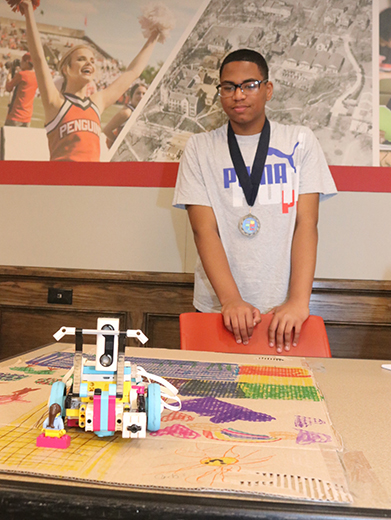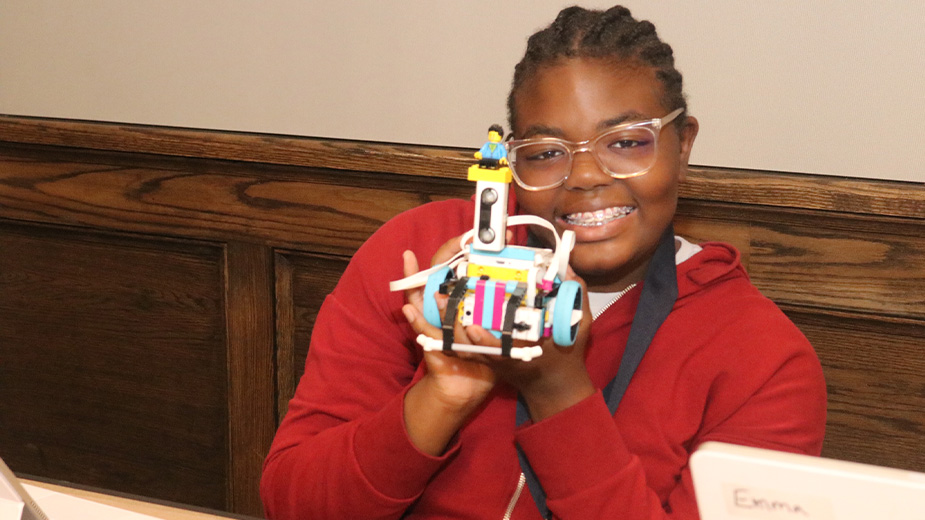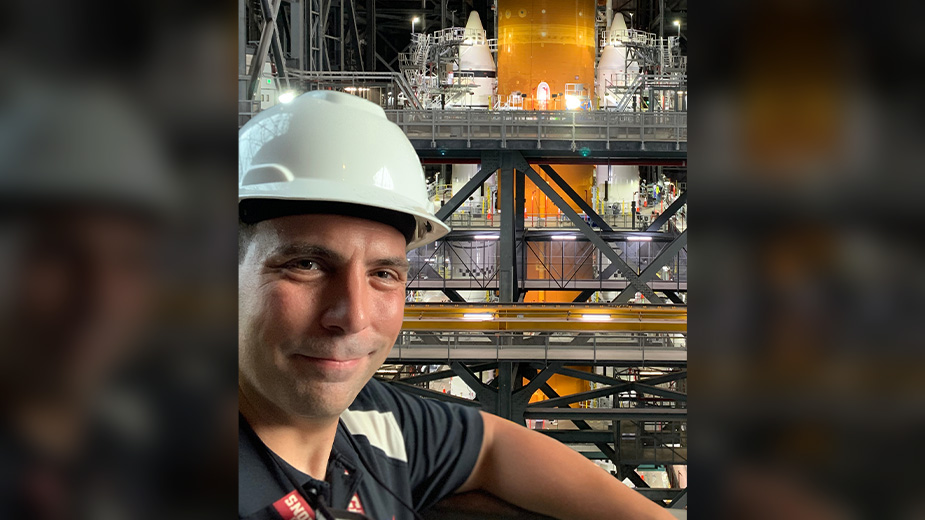ASD Students Show Off Coding and Robotics Skills at YSU
YOUNGSTOWN, Ohio – Coding, programming and robotics are going to be a big part of future jobs right here in the Mahoning Valley. And a program supported by the National Science Foundation is aiming to make certain students with autism spectrum disorder do not get left behind.
The Youngstown State University Lego Robot Programming Showcase is the fruition of two years of hard work and learning for some middle-school students at Potential Development and the Rich Center for Autism. The students showed the coding they have learned and put the robots they have built into action Wednesday, while family and friends watched.
Abdu Arslanyilmaz, director of the school of computer science and information systems at YSU, said the project pioneered the development of a coding and robotics curriculum that was adapted to help students with autism learn coding, which he said can be a good fit for them.
“It does require some level of computer knowledge and skill. It’s not just something anyone could do right [off] the bat. So they have to have some background knowledge in coding,” Arslanyilmaz said.
That is what the students worked on until about two months ago when they started building their robots and programming them, he said.
“And they did amazing. Just making that connection in their minds, the connection between the coding and the physical acumen, how what they code reflects on those physical acumen of those Lego robots is an achievement in itself. But they went well beyond that,” Arslanyilmaz said

Arslanyilmaz said the students were not only able to program the robots to move, but also program various parts of the robots to work together to achieve a task. He hopes the skills the students learned gave them something they enjoy doing, and possibly lead to them to continue work on coding in high school, consider studying computer science in college and find a career fit in the future.
He also hopes the methods for teaching coding, programming and robotics to this group of students can help create a curriculum for other students overcoming their challenge with ASD to find they, too, have abilities to code.
Gregory Boerio, executive director of the Rich Center for Autism, said teaching coding was a way to help students find their voice.
“We work so diligently with a special population of students to try to promote a voice, and that voice can come in so many different ways, and that learning can come in so many different ways,” Boerio said.
This gave the Rich Center students a way to gain STEM knowledge that other students are getting at their schools. “And we found students’ voices, and we found interests and skill levels that might not have otherwise been uncovered.,” Boerio said.
Likewise, students at Potential Development found success working their way through the program.
“I’m very proud of our students,” said Katie Petridis, program coordinator at Potential Development. “This has been ongoing for the last two years, twice a week, every week. So it did take a lot of time. It took a lot of learning. But they stuck with it, and it’s really nice to see them so proud of their work. They get to show off their projects and see other students’ projects as well. As an educator, it’s blown my mind how far they have come with the coding. There have been some struggles here or there, but they have worked hard.”
Approached by Arslanyilmaz with the idea in 2019, the collaboration among the schools started after he received funding for it. The first step was to start adapting the way coding is taught to the way students with ASD learn challenges best.

Petridis said she was part of that did assessments with this group of students early on, when the current eighth-graders were in sixth grade. The assessments were meant to determine how each student learns best. The curriculum was adaptable enough that the instructors were able to work with a variety of students who might be more visual or more verbal or more hands-on.
Similarly at the Rich Center, Boerio said the first year was spent on curriculum development. Then last year they started implementing it with the students and adapting it as they went, finding new ways to teach it.
Petridis said the students learned the basics of coding using the Scratch App. This year, when they moved on to the hands-on robots, it sparked a lot of interest with the students, and they got to see what some of the skills they learned last year could do.
Last year, the students had learned to code short videos on their iPads, but this year the program moved forward into building and coding their robots.
“I can speak for the Rich Center – this wouldn’t have been part of our curriculum naturally. But now we are going to continue to offer these options for our students as they enter middle school and into high school, again to promote that opportunity for students to find their voice in order to find that level of interest,” Boerio said.
Boerio hopes this opens the door for Potential Development, the Rich Center and YSU to work together on research to further enhance the learning and future for students on the autism spectrum.
“It’s great when two strong programs in the region have an opportunity to engage in something together,” Boerio said. “We’re both working toward the same core goals for our students, promoting those optimal opportunities in their lives and increase their learning for whatever their next phase is for them.”
Pictured at top: Kiyah Thomas, a Potential Development student, shows off the robot she built and used an app to program.
Copyright 2024 The Business Journal, Youngstown, Ohio.



